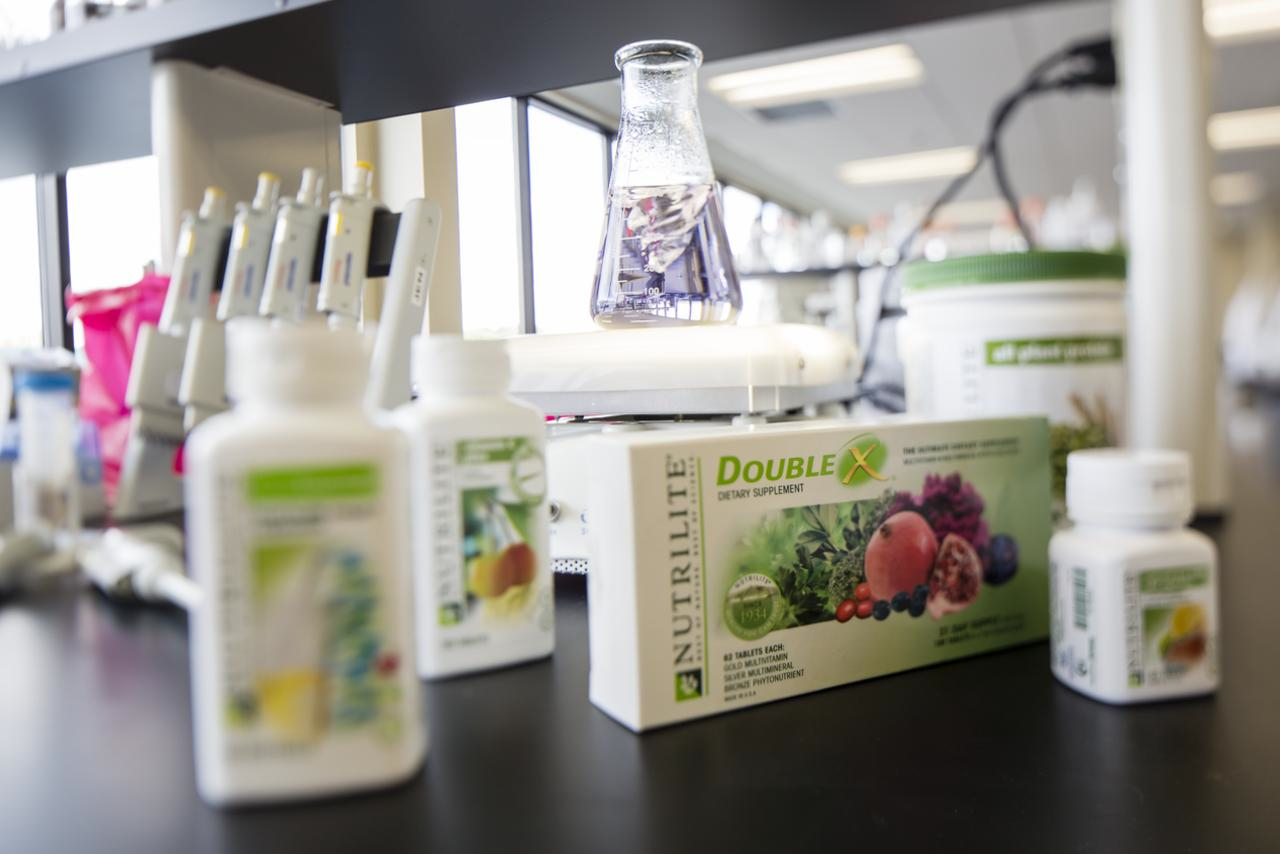Exposure to air, extreme temperatures and humidity can affect the length of time a consumer product retains its optimum potency, nutritive value, consistency and other quality aspects. That means scientists must consider the conditions in which a product might be stored – both before and after it has been opened – when they formulate products, package them and set expiration dates.
For a global company like Amway, which sends products into climates ranging from the heat and humidity of Malaysia to the extreme cold of a Moscow winter, the process of setting product expiration dates is complex, to say the least.
“Putting together a single product for the world is a very difficult proposition,” says Mark Proefke, manager of analytical sciences at Amway.
Inside the Amway analytical sciences and packaging labs, the volume of testing and research involved in this process is stunning.
Researchers conduct thousands of tests per year to determine the stability and longevity of products so their formulations will meet or exceed rigorous Amway standards for quality.
First they must identify what the active ingredient “marker” is in each product, then test and monitor that chemical or organic compound over time, observing how it behaves in a myriad of conditions and packaging scenarios.
Separating all of the active and inactive ingredients in a product to monitor each individually is no small task. The process is known as chromatography. For supplements that contain botanical ingredients, Amway performs a process known as phytochemical fingerprinting to separate ingredients (click here for a video created inside the Amway analytical sciences lab).
The separation process is challenging because the Amway™ product line is diverse, ranging from Nutrilite™ vitamin, mineral and dietary supplements to Artistry™ prestige cosmetics and skincare. How long a supplement will retain its nutritive value in its container is much different, say, than how a luxury skincare product might retain its quality in its packaging.
Stability of the product based on the ingredients that go into it is key to helping scientists determine both the expiration date for the unopened product, and the length of time a product will last once it’s open. In Amway labs, this is known as the “Period After Open,” or “PAO” date.
“When we talk about stability, we are primarily talking about the stability of the active ingredient,” says Proefke. “In Vitamin C tablets it’s very simple. It’s Vitamin C. Echinacea, for example, is very different because it contains a complex plant extract.”
Amway™ scientists must also consider different regulations by country in each of its markets for setting expiration dates. For instance, a product considered a dietary supplement in the U.S. might be regulated as a “food” in Canada, and vice versa. How the product is classified dictates how much testing is required both during formulation and after the product launches in each country.
The vast majority of Nutrilite™ supplements have a printed expiration date on the bottom of the container, a practice which complies with varying global regulations. Dates are set individually based on how long the ingredients retain their nutritive value.
As a general rule, unopened Artistry™ beauty products are good for 36 months past the date they were sealed in the container. Once open, Artistry™ products are good for 12 months. Beyond these dates, products may begin to separate, break down or otherwise lose quality.
How is it possible for Amway™ researchers to set a single expiration date on a product no matter where it is shipped around the globe?
The answer lies in the state-of-the-art labs at Amway.
Expanded and renovated in 2011, the product testing labs at the Amway complex in Ada, Michigan are noteworthy for the diversity of their equipment and quality of testing methods.
One lab is dedicated to the analytical sciences that go into product formulation and testing, the other to testing packaging. The analytical sciences lab alone performs roughly 30,000 tests annually, and the packaging lab handles 1,200 to 1,400 tests per year.
The packaging lab has five reach-in chambers and six walk-in climate chambers for temperature testing. These range in size from a small oven to a large storage room.
Inside, rows and rows of products are exposed to temperatures ranging from sub-freezing to 50 degrees Centigrade (122 degrees Fahrenheit). Some of the chambers contain varying humidity levels, and exposure time frames span from just a few days to several years, depending on the test.
Researchers must determine not only how a product behaves over time and under various harsh conditions, but how it performs in its original packaging.
The containers are designed specifically to work with what’s inside to ensure the long-term stability of the ingredients inside. This applies to everything from laundry soap to face creams.
Because package integrity is so important, the Amway packaging lab even simulates the effect of bumpy truck travel on packaged products and performs “drop tests” to determine the point at which packaging cracks or breaks.
And product stability considerations do not end with the active ingredients. Amway™ scientists also consider aesthetic factors like odor, appearance and viscosity. If storage conditions cause a breakdown in any of these factors, scientists will make subtle changes to the product to make sure it remains effective and stable over time.
That’s how customers can be assured every Amway™ product meets or exceeds rigorous Amway standards for quality and effectiveness when it is delivered to them.
Amway has no pre-set temperature maximum or minimum guidelines for storing products, but scientists say common sense is the best rule for customers when storing products.
“While we do test our products for extreme conditions, it’s best to try to avoid storing under those kinds of conditions,” says Cathy Majestic, packaging lab supervisor.
Mark Gammage, manager of chemistry stability investigations, agrees.
“As far as storage of products go, try to avoid extremes in heat, humidity and direct sunlight to ensure the highest quality and effectiveness throughout the product’s life.”
And for best results, dispose of any product that is past its expiration date.




